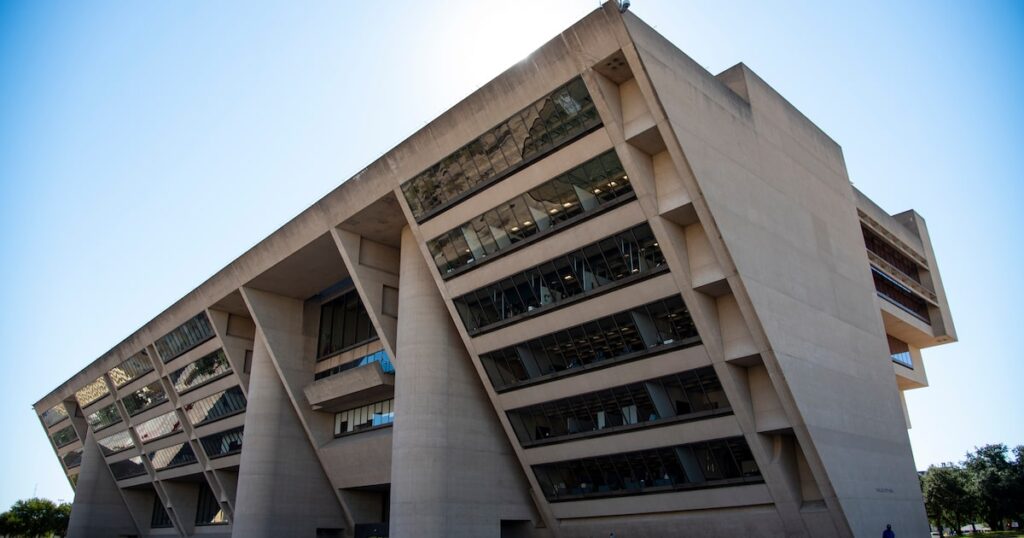As the city of Dallas begins budget talks for the next year, Dallas City Manager Kim Tolbert said Wednesday, “It’s going to be a painful summer.”
City officials have asked departments to create an inventory of services and programs. The goal is to fund services the city deems priorities.
As that process continues, outstanding concerns have already popped up.
Seven months into the current fiscal year, there’s a $6.5 million revenue shortage to cover city expenses, and the gap could increase.
The city adopted a nearly $5 billion budget last year after overcoming a $38 million shortfall, but officials said Wednesday they weren’t expecting the scale of property tax challenges at the Dallas County Appraisal District.
The result has been a loss in property values that upended the city’s forecasts.
“We’ve relied on history, and history is changing,” said Chief Financial Officer Jack Ireland, adding that officials had not anticipated a decline in collections in the current and the past fiscal years.
The decline is just one factor defining the road ahead. Cities and towns all over the U.S. are bracing for leaner budgets. Federal relief dollars have nearly dried up, and federal cuts loom on the horizon. In Texas, leaders in Houston and Austin have rung alarm bells about looking for areas the city government can shave off to balance their books.
Houston recently presented a balanced budget after overcoming a $300 million deficit, with major cuts in its neighborhoods department, which oversees code enforcement for residential properties, the Houston Chronicle reported.
In Dallas, discussions among council members heightened the likelihood of drastic program cuts and employee losses on the civilian side.
Pension payments to overcome $4 billion shortfalls in the police and fire pension system and the civilian fund are driving expenses in the city. The city is also mandated to divert half of any new revenue year over year into the pension system and use the rest of the money to hire and retain public safety officers after the passage of Proposition U.
But there’s uncertainty there, too. The city is budgeting payments according to the plan council members adopted last year. Officials plan to pay out $221 million in the next fiscal year.
However, the pension system had its own plan that called for more city dollars in the first few years of a 30-year funding plan. The system sued and won in court.
In the upcoming year, the pension fund is asking for $247 million.
Additionally, the city could also be on the hook to pay $13 million more this fiscal year.
Now, city officials are banking on the Texas Legislature to pass a Senate bill that could circumvent the ruling and put into law the city’s plan. However, the bill is yet to be heard by the state’s House of Representatives.
The city, which also plans to shore up funding to hire more than 300 officers, is also engaged in negotiating compensation, work conditions and hiring with police officers under its “meet and confer” agreement. Last year, the percentage increase in payments was twice what the city planned for, and it is yet to be determined what the increase would look like this year.
That’s not all. The city also wants to increase its budget for building maintenance and modernizing its information technology infrastructure.
Some departments have already surpassed their current budget
Officials highlighted departments that were over budget.
The city’s animal services are anticipated to be about $2.4 million over budget. Director Paul Ramon explained the department had been helping the Dallas Police Department in tackling animal cruelty cases, which involve court proceedings that extend how long animals are in the department’s care. Costs have also gone up because more and more animals are coming in from the community for services.
The Parks and Recreation Department is also forecast to be more than a million dollars over budget due to contractual issues at Fair Park.
The city recently took over ground maintenance from the park’s operator Oak View Group, but the list of repairs and deferred maintenance may add hundreds of thousands of dollars to the city’s tab. Officials also highlighted that the office of homeless solutions was projected to be $400,000 over budget because of costs related to inclement weather sheltering.
What gets cut?
That’s the part the city will have to figure out.
Last year, the city cut nearly 300 positions and consolidated several across departments. They also hiked fees and the cost of services to generate more revenue.
Programs also were cut. For instance, officials cut funding for “underutilized Violence Intervention and Youth Guidance contracts.”
The fate of community pools and the Skillman Southwestern Branch Library, which were on the chopping block last year and saved at the last minute, may also be up in the air.
Council member Cara Mendelsohn told Tolbert she was hoping for reductions in the number of employees. At the same time, the city is also diverting resources to hire more police officers.
All departments are expected to see cuts. The question will be by how much. Council member Chad West said he will be keeping an eye on the city’s department of transportation and public works, which is responsible for the condition of streets, sidewalks, design and ADA ramps that “dictate the public safety of how people get around the city,” he said.
“That is something we cannot forget when we’re looking at that department — the fact that how they apply their budget directly impacts how often our police and our fire have to respond to the number of accidents and pedestrian fatalities,” West said.


